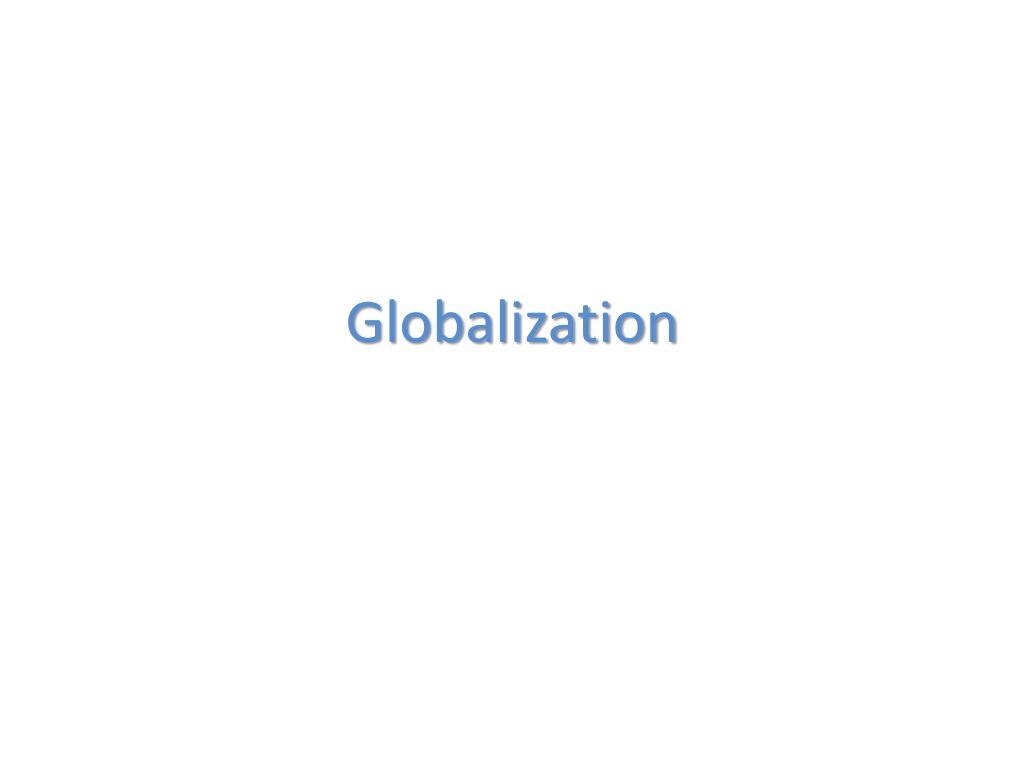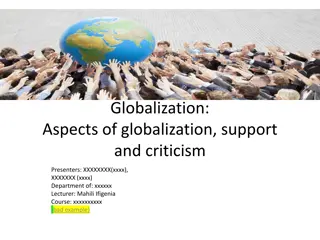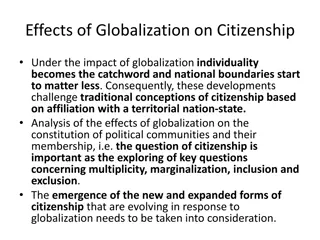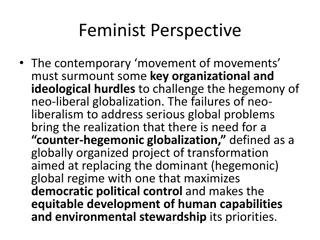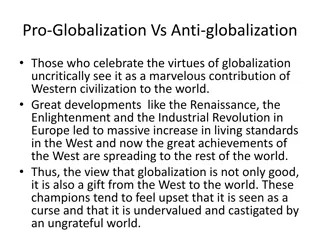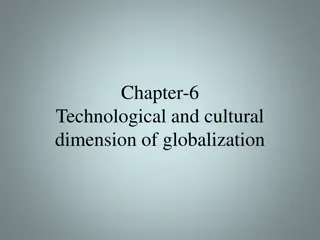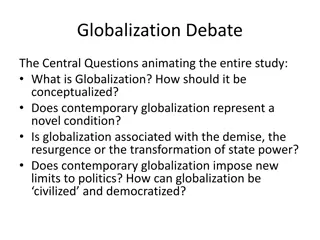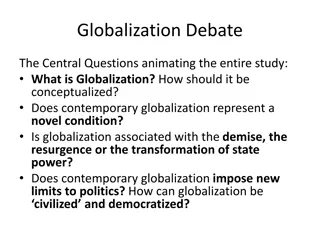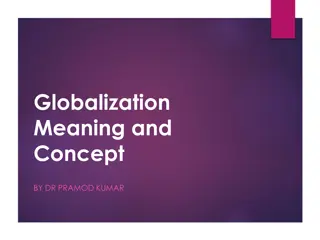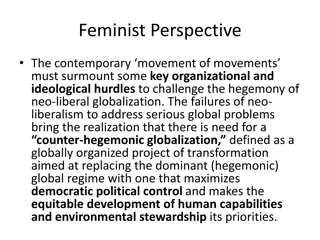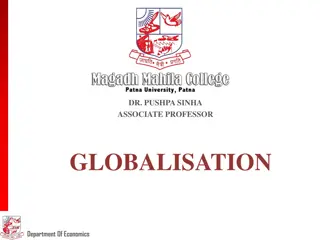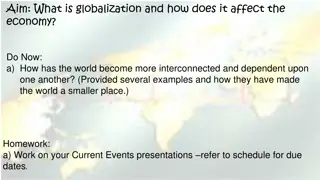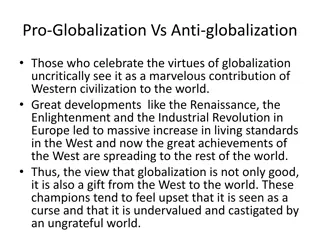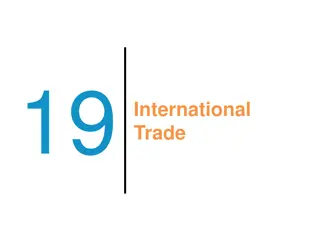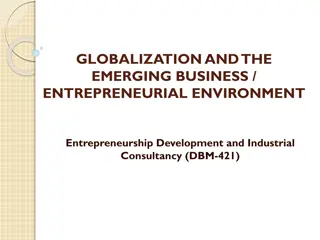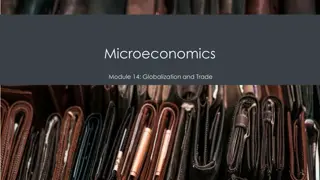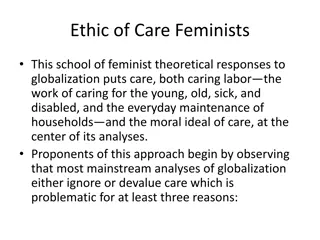Understanding Globalization and Its Impacts
Globalization is the process of market integration on a global scale, leading to free trade and integrated financial markets. It involves leveraging technology advancements for efficient production methods and accessing low-cost markets worldwide. Globalization offers conveniences such as quick financial transactions, job opportunities, and valuable educational services online. Key networks of globalization provide vast information access and interactive forums for collaboration, leading to time and effort savings. Economic thinking has historically driven globalization through mechanization, transportation advancements, and communication innovations.
Download Presentation

Please find below an Image/Link to download the presentation.
The content on the website is provided AS IS for your information and personal use only. It may not be sold, licensed, or shared on other websites without obtaining consent from the author. Download presentation by click this link. If you encounter any issues during the download, it is possible that the publisher has removed the file from their server.
E N D
Presentation Transcript
Globalization is market integration on a world scale. And what does market integration mean? It means that markets operate according to the law of one price.
Components of Globalization Free Trade Integrated resource market. Integrated financial market.
An example on technology advance Advantages of computers and telecommunications advance: Compressing our sense of time and space. Providing an enormous data highway for virtual goods in transit. Offering round-the-clock trading anywhere in the world.
Global Living Why there is no full self- sufficiency? There are several reasons; which are: Local Production maybe much more expensive. The limited scale of local production. Local production cannot possibly offer the sheer variety that maybe enjoyed by trading through global markets.
Globalization offers convenient solutions for life complicated needs Tap into efficient production methods using the most modern technology. Build access to low cost source markets around the globe. Enlarge the scale of production which makes products cheaper.
Key Networks of Globalization Enormous amounts of information. Interactive forums for conferencing and collaboration. Substantial savings in time and efforts in performing various tasks. Job opportunities in web design, computer technology and sales.
Quick and safe financial transactions. Powerful platform for shopping and product delivery. Valuable tool for delivering educational services online. Electronic libraries and references services.
Economic Thinking There were three key processes underlining early globalization: Mechanization of production using steam power. Advent of steamships and railroads. Invention of telegraph.
Three Important process of globalization Technological Progress Elimination of barriers to trade Stable monetary unit of value.
Institutional framework of Globalization Legal mechanisms for establishing property rights and the rules of fair exchange. Policies for establishing fair standards for labor and the environment. Stabilization policies for managing economic swing.
Early origin of Globalization Civilizations of Sumer in Iraq, and the Indus Valley (an area overlaps India and Pakistan. Globalization today is the result of recent sets of events, such as: 16 century, transportation cost began to drop sharply.
Early origin of Globalization 1760s: Industrial revolution introduced steam power thereby further lowering the cost of carrying people and goods to great distances. 1830s on: prices of goods and services along with the cost of travel began to come within the reach of the average individual.
Recent History of Globalization The recent history of globalization begins with 19thcentury British Imperialism. Thanks to the British, there emerged a massive world market, a powerful testimony to the great magic industrialization that turned Great British into a global powerhouse.
The secret to that success is generally traced to what has come to be known as triangular trade, involving Britain, her colonies and the global market place.
Triangular Trade This is how it worked: Britain s colonies served as cheap sources of raw material for feeding the manufacturing mills back home The manufactured products from Britain were bound for the expanding global market Surplus products were dumped on the colonies at very agreeable terms
For British investors assuring growth and prosperity. As production costs were effectively kept down and markets continued to expand, profits could be raked in with careless abandon and the mother country became tremendously rich.
STAGE I (1870S TO 1913) technological progress financial capital flow trade in goods and services.
Historians consider the first stage of early modern globalization to be between the 1870s and 1913. Britain was the only big economy to maintain open trade policies for a considerable length of time. The imperial power of Britain achieved complete market integration as markets for goods and services were linked up along with complex networks for money and financial assets. The U.S. protected itself with very steep tariffs on manufactured imports and these continued throughout the century. The onset of a recession in 1870s triggered tensions in Continental Europe
Sharp swing against globalization in Europe: farmers in Europe found common cause with businesses, seeking protection from cheap foreign imports tariff barriers were quickly erected which translated into highly restrictive trading practices cordial relations between nations quickly turned sour and war clouds began to gather overhead
STAGE II: POST-WWII (19451971) One of the key problems concerning globalization is that it runs the risk of pitching trade policy against domestic policy goals. During the interwar period, the issue of trade and market linkages became highly politicized as nationalist spirits soared high and most of the affluent nations of the world looked inward.
World War II drew to a close there was a renewed interest in finding a reasonable balance between an open global economy and sensible domestic politics. Under the Marshall Plan, the U.S. sought to help a severely demoralized Europe and Japan to rebuild by: reopening trade routes was seen as the surest path to economic success making available easy credit through the Marshall Plan
Preeminent British economist John Maynard Keynes helped to design a happy formula that would help nations to: open shop once again and engage in global exchange give top priority to their domestic concerns regarding full employment, economic growth, equity, social insurance and the welfare state.
